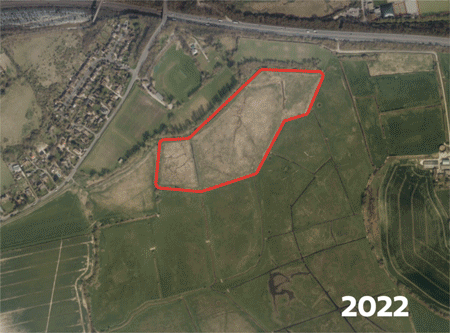
A Stream Through Time: The Story of
an Everchanging Landscape
The stream has a long and vibrant history as an important working waterway and was used in the past to deliver goods into Lewes, including stone for the building of Lewes Priory which began around 1080 AD. In the seventeenth century, water from the stream fed into Lewes’ first pumped water supply. Centuries later, in the 1830s, the Cockshut was used to supply water for the first piped-water system to serve Lewes from the reservoir head opposite the Black Horse in Western Road
Archaeology
During March 2023 an archaeological evaluation and geoarchaeological investigation were undertaken in advance of restoration work to re-route the Cockshut Stream and create a new wetland habitat by Chris Butler Archaeological Services Limited. Significant waterlogging was problematic for the duration of the evaluation.
Geoarchaeological investigations in the form of hand augering recorded peat deposits overlain by alluvial deposits across the site. Two cores (to a depth of c.8m) through the alluvial silts, peat deposits and river gravels below, down to the weathered chalk periglacial deposits were retrieved for further geoarchaeological/environmental analyses.
A total of fourteen trenches, thirty metres in length, were machine excavated to a maximum depth of one metre. All trenches recorded similar stratigraphic profiles consisting of a topsoil, subsoil, gleyed alluvial silt and gleyed alluvial silt with iron oxidisation. A very small assemblage of Late Post-Medieval ceramic building material (CBM), pottery and a clay pipe were recovered from the topsoil and subsoil. Although numerous trenches recorded modern, possibly naturally eroded water channels, only two features of archaeological interest were revealed. Trench two recorded a ditch of unknown date (likely Late Post-Medieval), which was not obvious in plan or from Lidar data. Trenches ten and eleven recorded a section through a large ditch running north to south containing numerous fills and modern (likely 20th Century) brick, tile and scaffold poles. No further features of archaeological interest were recorded.


